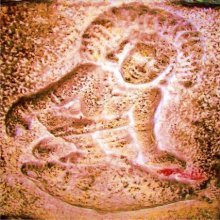Matsyendrasana, Matsyendrāsana, Matsyendra-asana: 2 definitions
Introduction:
Matsyendrasana means something in Hinduism, Sanskrit. If you want to know the exact meaning, history, etymology or English translation of this term then check out the descriptions on this page. Add your comment or reference to a book if you want to contribute to this summary article.
Images (photo gallery)
In Hinduism
Yoga (school of philosophy)
Source: Wisdom Library: YogaMatsyendrāsana (मत्स्येन्द्रासन) is one of the eighty-four āsanas (postures) taught by Śiva, according to the Haṭharatnāvalī 3.7-20. It is said that Ādinātha (Śiva) hand-picked 84 yoga postures from 84,00,000 living beings and taught them for the purpose of introducing physical health and well-being to the human body. The compound matsyendrāsana translates to Matsyendra and āsana (posture).
The 17th-century Haṭharatnāvalī is a Sanskrit reference book dealing with these āsanas (e.g., matsyendrāsana) which form a major constituent of the haṭhayoga practice. It was written by Śrīnivāsa.
Source: archive.org: Gheranda SamhitaMatsyendrāsana (मत्स्येन्द्रासन) is one of the thirty-two āsanas (postures) taught in the second chapter of the Gheraṇḍasaṃhitā: “Withdrawing the abdomen at ease towards the back; then bending the left leg and placing the foot at the right knee; place on this knee the right elbow also. Then placing the chin on the right arm fix the gaze between the eye-brows. This is called the Matsyendrāsana”.
Matsyendrāsana is one of the selected 32 postures amongs 8,400,000 total mentioned by Śiva, according to Gheraṇḍasaṃhitā 2.1-2, “In all, there are as many Āsanas as species of animals. Eighty-four lacs of them are mentioned by Śiva. Out of them, 84 are regarded as important and among these 84, again 32 are good (enough) in this world of mortal beings”.
The 17th-century Gheraṇḍasaṃhitā (mentioning matsyendra-āsana) is one of the three classic texts of Haṭha-yoga: a major branch of Yoga, sharing similarities with the Yoga system taught by Patañjali, though claiming its own mythical founder known as Matsyendranātha. This gheraṇḍa-saṃhitā is an encyclopedic Sanskrit treatise describing thirty two such āsanas.

Yoga is originally considered a branch of Hindu philosophy (astika), but both ancient and modern Yoga combine the physical, mental and spiritual. Yoga teaches various physical techniques also known as āsanas (postures), used for various purposes (eg., meditation, contemplation, relaxation).
See also (Relevant definitions)
Partial matches: Matsyendra, Asana.
Ends with: Ardhamatsyendrasana, Baddhamatsyendrasana, Paripurnamatsyendrasana, Parshvamatsyendrasana.
Full-text: Matsyendrapithasana.
Relevant text
Search found 1 books and stories containing Matsyendrasana, Matsyendrāsana, Matsyendra-asana, Matsyendra-āsana; (plurals include: Matsyendrasanas, Matsyendrāsanas, asanas, āsanas). You can also click to the full overview containing English textual excerpts. Below are direct links for the most relevant articles:
Varahi Tantra (English Study) (by Roberta Pamio)
Chapter 26 - Haṭhayoga (according to the Haṭhayogapradīpikā) < [Summary of the Vārāhī Tantra]
